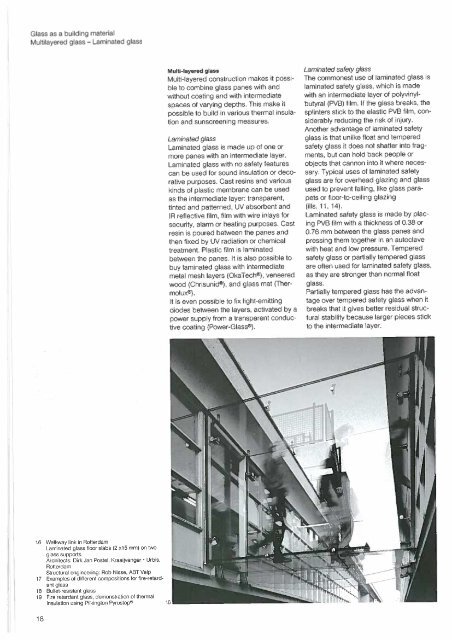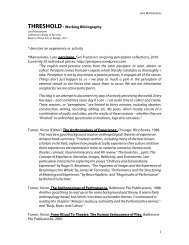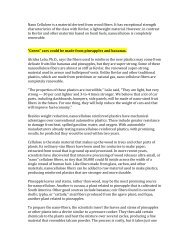Translucent Materials
Translucent Materials
Translucent Materials
You also want an ePaper? Increase the reach of your titles
YUMPU automatically turns print PDFs into web optimized ePapers that Google loves.
Glass as a building material<br />
Multilayered glass — Laminated glass<br />
16 Walkway link in Rollerdam<br />
Laminated glass ttoor stabs (2 xiS mm) on two<br />
gtass supports<br />
Architecis; Dirk Jan Postal, Kraaijvanger urbis,<br />
Rollerdam<br />
Structural engineering: Rob Nisse, AST Vetp<br />
17 Examples ot different compositions for fire-retard<br />
ant gtass<br />
18 Butlet-resistant glass<br />
19 Fire retardant glass, demonstration ot thermal<br />
insulation using Pilkington Pyrostop’<br />
18<br />
Multi-layered glass<br />
Multi-layered construction makes it ~O5Sl<br />
ble to combine glass panes with and<br />
without coating and with intermediate<br />
spaces of varying depths. This make it<br />
possible to build in various thermal insula<br />
tion and sunscreening measures.<br />
Laminated glass<br />
Laminated glass is made up of one or<br />
more panes with an intermediate layer.<br />
Laminated glass with no safety features<br />
can be used for sound insulation or deco<br />
rative purposes. Cast resins and various<br />
kinds of plastic membrane can be used<br />
as the intermediate layer: transparent,<br />
tinted and patterned, UV absorbent and<br />
IA reflective film, film with wire inlays for<br />
security, alarm or heating purposes. Cast<br />
resin is poured between the panes and<br />
then fixed by UV radiation or chemical<br />
treatment. Plastic film is laminated<br />
between the panes. It is also possible to<br />
buy laminated glass with intermediate<br />
metal mesh layers (OkaTech®), veneered<br />
wood (Chrisunid®), and glass mat (Ther<br />
molux®).<br />
It is even possible to fix light-emitting<br />
diodes between the layers, activated by a<br />
power supply from a transparent conduc<br />
tive coating (Power~Glass®).<br />
16<br />
Laminated safety glass<br />
The commonest use of laminated glass is<br />
laminated safety glass, which is made<br />
with an intermediate layer of polyvinyl<br />
butyral (PVB) film. If the glass breaks, the<br />
splinters stick to the elastic PVB film, con<br />
siderably reducing the risk of injury.<br />
Another advantage of laminated safety<br />
glass is that unlike float and tempered<br />
safety glass it does not shatter into frag<br />
ments, but can hold back people or<br />
objects that cannon into it where neces<br />
sary. Typical uses of laminated safety<br />
glass are for overhead glazing and glass<br />
used to prevent falling, like glass para<br />
pets or floor-to-ceiling glazing<br />
(ills. 11, 14).<br />
Laminated safety glass is made by plac<br />
ing PVB film with a thickness of 0.38 or<br />
0.76 mm between the glass panes and<br />
pressing them together in an autoclave<br />
with heat and low pressure. Tempered<br />
safety glass or partially tempered glass<br />
are often used for laminated safety glass,<br />
as they are stronger than normal float<br />
glass.<br />
Partially tempered glass has the advan<br />
tage over tempered safety glass when it<br />
breaks that it gives better residual struc<br />
tural stability because larger pieces stick<br />
to the intermediate layer.











